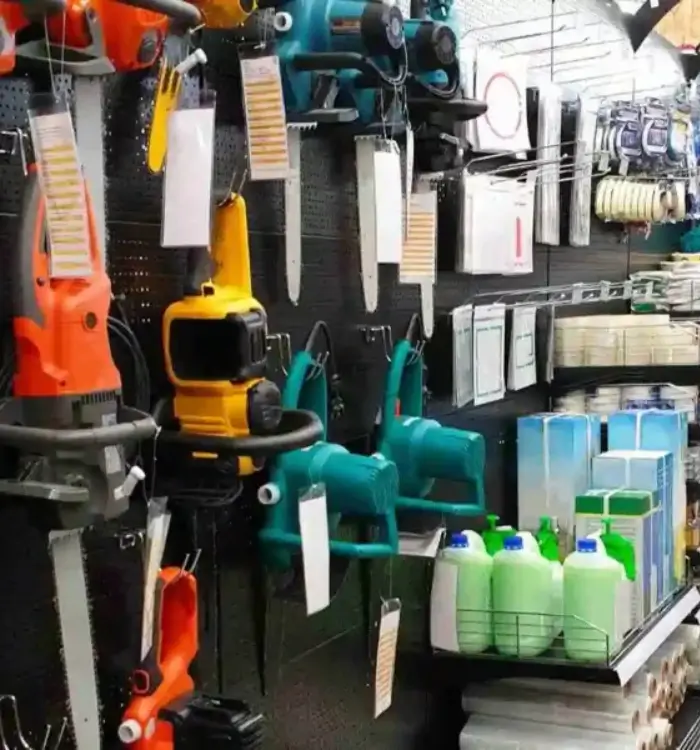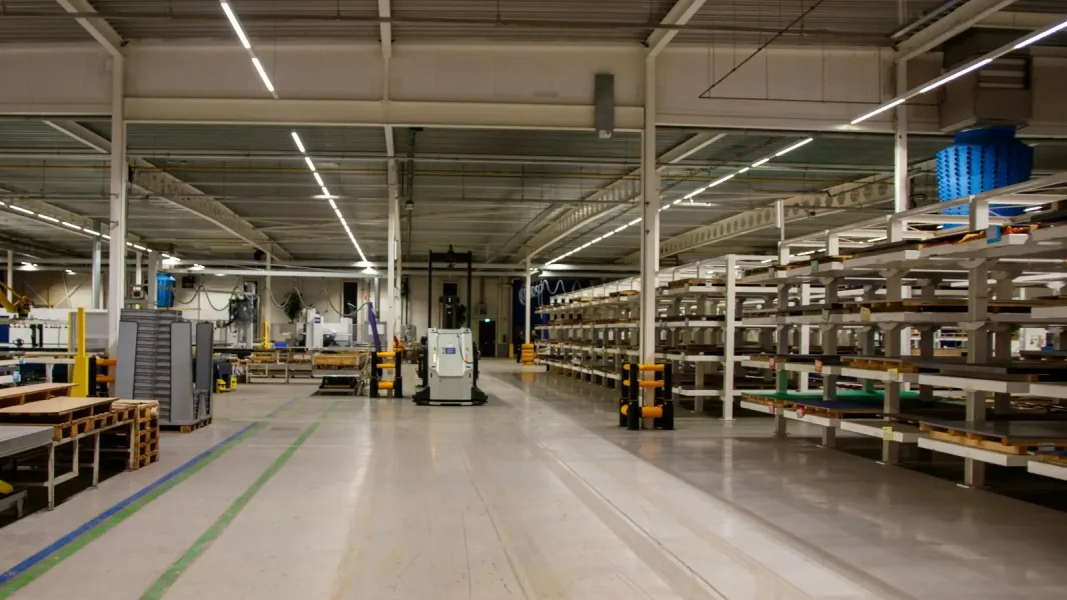In France, the DIY sector represents a significant market share, with €38MM in 2023*.. This growth in the DIY market is creating inventory management and overstocking challenges for retailers. To optimize stock management, it’s crucial to strike a balance between product availability and efficient inventory management.
Out-of-stocks can lead to lost sales and unhappy customers, while overstocks can tie up capital and increase storage costs. In this context, stock optimization in the retail sector is a real issue for retailers. They need to adopt robust strategies to manage their inventories optimally.
The problem of management and optimization is complex and multifaceted. Not only do retailers need to ensure that the products most in demand are always available, they also need to avoid accumulating surpluses that can become costly.
Out-of-stocks can damage customer loyalty, while overstocks can lead to significant financial losses. To overcome these challenges, retailers need to implement effective strategies and use advanced technologies to anticipate fluctuations in demand and adjust stock levels accordingly.
Inventory management in the DIY sector
Efficient inventory management is essential for any DIY retailer. An optimal balance between supply and demand can transform a retailer’s operational performance.
Stock-outs occur when demand exceeds forecasts, leaving empty shelves and dissatisfied customers. This can damage the brand’s reputation and encourage customers to turn to the competition..
For example, a do-it-yourselfer looking for a specific tool for an urgent project might not wait for the store to be stocked and choose to buy elsewhere.
Conversely, overstocking occurs when a brand orders more products than it needs. This may be due to over-optimistic forecasts or poorly planned promotions. Not only does overstocking tie up financial resources, it also takes up valuable warehouse space. This can limit storage capacity for other, more necessary items.
To avoid these problems, it is crucial to adopt a proactive, analytical approach to inventory management.. The use of of advanced demand forecasting toolsbased on artificial intelligence and data analysis, can help DIY stores anticipate customer needs more accurately. This helps maintain optimal stock levels, reducing the risk of stock-outs and overstocking.
In addition, effective inventory management requires close collaboration with suppliers to ensure timely deliveries and flexibility in the face of fluctuating demand. flexibility in the face of fluctuating demand. By integrating real-time inventory management systems, retailers can react quickly to market changes and adjust their stock levels accordingly.
The DIY out-of-stock phenomenon: Some common causes
- Inaccurate demand forecasts
One of the main causes of stock shortages is the inability to forecast demand correctly. Inaccurate forecasts may be due to the use of outdated methods or insufficient analysis of historical data and market trends. Without a precise estimate of future demand, retailers risk not ordering enough products to meet customer needs.
- Problems linked to a poor supply chain
Errors in the supply chain solution can also lead to stock-outs. This includes delays in orders, errors in order quantities, or communication problems with suppliers. Inefficient management of safety stocks, i.e. the minimum quantity of products held in reserve to cover unforeseen fluctuations in demand, can also lead to breakage.
- Seasonal fluctuations and special events
Seasonal variations and special events, such as holidays, promotions or marketing campaigns, can cause sudden and unforeseen increases in demand.. If these fluctuations are not anticipated and incorporated into demand forecasts, retailers can quickly find themselves out of stock.
- Logistical problems
Logistical challenges, such as delivery delays, transportation problems or warehousing difficulties, can prevent products from reaching shelves on time. These problems can be exacerbated by adverse weather conditions, strikes or other unforeseen disruptions in the supply chain.
- Changing consumer trends
Rapid, unforeseen changes in consumer preferences can also lead to stock-outs. Sudden trends, influenced by factors such as social media, influencers or new technologies, can lead to a sudden increase in demand for certain products. Ifcompaniesdon’t react quickly to these changes, they risk not having enough stock to meet demand.
- Data errors and system problems
Data errors and system problems can also contribute to stock-outs. Inaccuracies in inventory management databases, errors in tracking on-hand quantities, or failures in inventory management systems can all lead to incorrect assessment of actual stock levels.
To avoid out-of-stocks or overstocks, we recommend our article : Best practices for stock optimization.
The overstocking phenomenon: some common causes
There are several common causes of overstocking. Inaccurate demand forecasting is one of the main reasons: when a company overestimates future demand, it orders excessive quantities of products.
Poorly planned promotions and new product launches without proper market analysis can also lead to over-selling. lead to surpluses.
In addition, faster-than-expected delivery times or bulk purchases to obtain discounts can lead to excessive stock levels. Changes in market trends or consumer behavior not anticipated by inventory management systems also exacerbate the problem.
Finally, poor coordination between sales, marketing and logistics departments can lead to ordering decisions that are not aligned with actual demand, creating costly and inefficient overstocking.
Strategies for avoiding shortages and overstocking in the DIY sector
Demand forecasts adapted to DIY
DIY stores are highly exposed to seasonal variations (e.g. lawnmowers in spring, heaters in winter) and peaks linked to local promotions. The use of advanced demand forecasting tools, based on historical data, weather forecasts, regional behavior and sales campaigns, makes it possible to anticipate needs more accurately and avoid shortages on sensitive references.Category management and product specificities
Each category presents different dynamics: consumables (screws, paint, glue) require tight management of permanent availability, while seasonal products (barbecues, air conditioners) require upstream logistical anticipation. Category management enables us to allocate stocks in a differentiated way, and avoid shortages on products that are strategic for sales and customer satisfaction.Rotation and flow management
The DIY sector combines fast-moving products with bulky, slow-moving items. Implementing rotation rules such as FIFO (First In, First Out), coupled with active monitoring of turnover rates by store, guarantees better availability while reducing costs linked to overstocking or unsold items.Automation and intelligent replenishment
Automated inventory management systems offer a major advantage: real-time monitoring of levels, proactive detection of critical thresholds and automatic triggering of replenishments. For DIY chains, the integration of these solutions with e-commerce platforms and logistics warehouses ensures omnichannel visibility and significantly reduces the risk of stock-outs, both in-store and online.
Artificial intelligence for inventory management
The integration of artificial intelligence (AI) into inventory management is a major step forward for DIY companies. Here’s how AI can transform management:
- Forecast accuracy: AI algorithms can analyze vast amounts of data to identify patterns and trends that traditional methods might miss. This makes it possible to produce more accurate demand forecasts and better inventory planning.
- Optimizing stock levels: AI optimizes stock levels in real time, taking into account factors such as sales trends, delivery times and seasons. This reduces the risk of stock-outs and overstocking, ensuring optimum product availability.
- Replenishment automation: AI systems can automate replenishments based on demand forecasts and current stock levels. This ensures that products are always available without overloading warehouses.
- Exogenous data management: AI can integrate exogenous data such as weather conditions, local events and economic trends to refine demand forecasts. For example, an increase in sales of certain tools can be anticipated in advance of a gardening season.
To remain competitive, do-it-yourself companies need to master inventory optimization, using advanced technologies such as artificial intelligence and demand forecasting. These tools make it possible to cut costs, improve operational efficiency and better meet customer expectations.
In particular, AI offers unprecedented capabilities for anticipating market fluctuations and adjusting stock levels in real time. But to maximize the benefits, this approach must be part of a global vision of the supply chain: closer collaboration with suppliers, sustainable logistics and team training are all key success factors.
In this way, inventory optimization cannot be dissociated from an integrated strategy aimed at sustainable performance and adaptability to market changes.
*Source: Businesscoot







